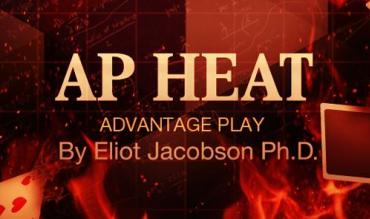One of the most interesting aspects of this conference was a competition between the table games for best game. Each participant in the conference was given the opportunity to vote on the games. To be eligible to vote, the participant had to play each game. This play is certified: after a game was played, the vendor stamped a card. Only a participant with a full card could vote.
Here is a sample stamp-card.
Winning this contest has significant positive consequences for the game. Aside from the recognition and a small cash prize, winning came with the guarantee of a trial of the game in seven casinos in a variety of jurisdictions.
Almost every game developer believes he has the best game. It is tough to lose this competition and hard feelings are common. But game development is a brutal business. The costs are extraordinarily high and the chances for success are microscopic. The number of new games and side bets that have attained commercial success in the last 5 years can be counted on one hand.
It should come as little surprise then that the winner came from the largest company to have a booth, Galaxy Gaming. This company is traded publicly under OTC: GLXZ and has in its portfolio such superstars as Lucky Ladies and 21+3. The skills developed by looking at a lot of games leads to having a more refined instinct for games with public appeal. Their winning game was “High Card Flush” (HCF).
The rules are fairly easy to understand. They use the familiar Ante/Play structure.
-
The player makes an “Ante” wager.
-
The player and the dealer receive seven cards, face-down.
-
The player makes the highest ranking flush from his seven cards. To rank flushes, the following two criteria are used. Flushes are first ranked by the number of cards used in the flush. The more cards, the higher the rank. Flushes with the same number of cards are ranked by their highest card(s).
-
The player can then fold and surrender his Ante or can make a Play bet to compete against the dealer.
-
The Play bet amount depends on the number of cards in the player's flush. 1x with a two, three or four-card flush. 2x with a five-card flush. 3x with a six-card flush.
-
The dealer then turns over his cards and makes his best flush. The dealer needs at least a nine-high three-card flush or better to qualify.
-
If the dealer does not qualify, the Ante bet wins even money and the Play bet pushes.
-
If the dealer qualifies then the player and dealer compete. If the player wins, his Ante and Play bets are paid even money. If the player loses, he forfeits his Ante and Play bets. If the player and dealer push, then the Ante and Play bets push.
A very good approximation to basic strategy is to make a Play bet with a T-8-6 flush or higher. In this case, the house edge is approximately 2.71%.
I agree that HCF was the best game at the conference. However, I cannot say that HCF is any better than so many other games on the market and cannot immediately see why it should break through as a specialty game.
For the purpose of this blog, the question is if HCF has any advantage play vulnerabilities. The answer is "yes," but none are serious. Here are my thoughts:
Card counting. HCF is dealt from a single deck. One round is dealt between shuffles. Therefore, this game is not vulnerable to card counting.
Hole-card play. Flashing a hole-card may turn out to be a common occurrence. However, like Pai Gow Poker, seeing one card out of seven is not much extra information. The best information may be seeing an over-card of a different suit, while having no cards of that suit in the player’s hand. This would raise the player’s minimum Play hand. Alternatively, seeing a low card of the same suit as the player’s suit may be decent information. This would encourage the player to play a weaker hand. My opinion is that HCF is not vulnerable to hole-carding unless the dealer exposes several cards.
Collusion. Seeing other player’s hands may be strong information. With a lot of over-cards in your neighbor’s hands, it will be less likely that the dealer wins by high-card when the player holds a borderline hand. This will push the Play hand down. Likewise, if there are few over-cards, then the borderline Play hand goes up. My opinion is that at a full table, there may be a meaningful player edge through collusion. I encourage Galaxy to have the players keep their cards hidden when making their Play decisions.
Edge sorting. This method of advantage play requires that the cards be sorted into two separate subsets that give significant extra information. Certainly, sorting into {C}, {D,H,S} will tell the player when the dealer has a club flush. Similarly, sorting into {C,S} (black) and {D,H} (red) is strong. If an automatic shuffler is used, the cards should be turned before being placed into the shuffler. If the cards are hand shuffled, a turn is necessary somewhere in the middle of the procedure.
Other. If the game is hand-dealt, then first-card knowledge may be strong. If the player at first base sees that his first card will be an Ace or King, then he is more likely to be dealt a powerful flush and should make a large bet. If the player sees that his first card will be low, then he should bet the table minimum or "Wong out."
I wish Galaxy Gaming the best of luck with this game. They have been around a long time and know what they’re doing. But they also know that a game that looks like a winner usually goes nowhere


